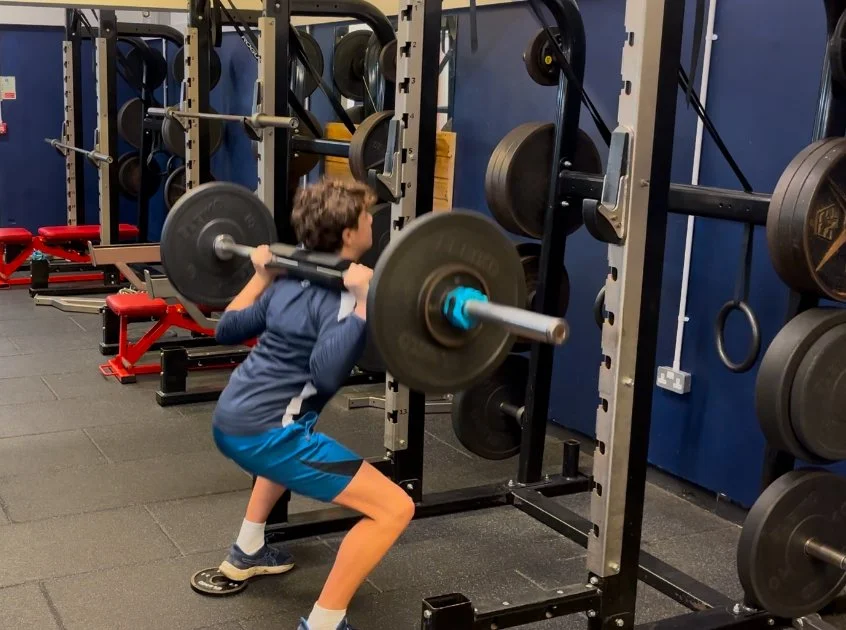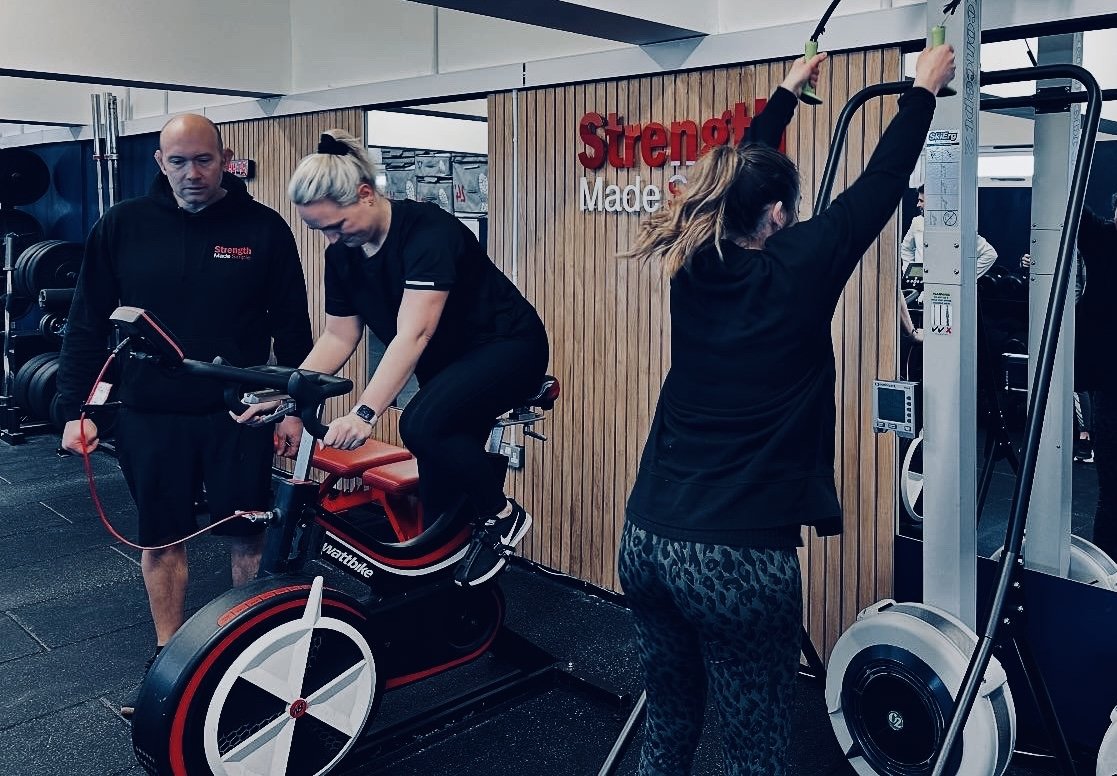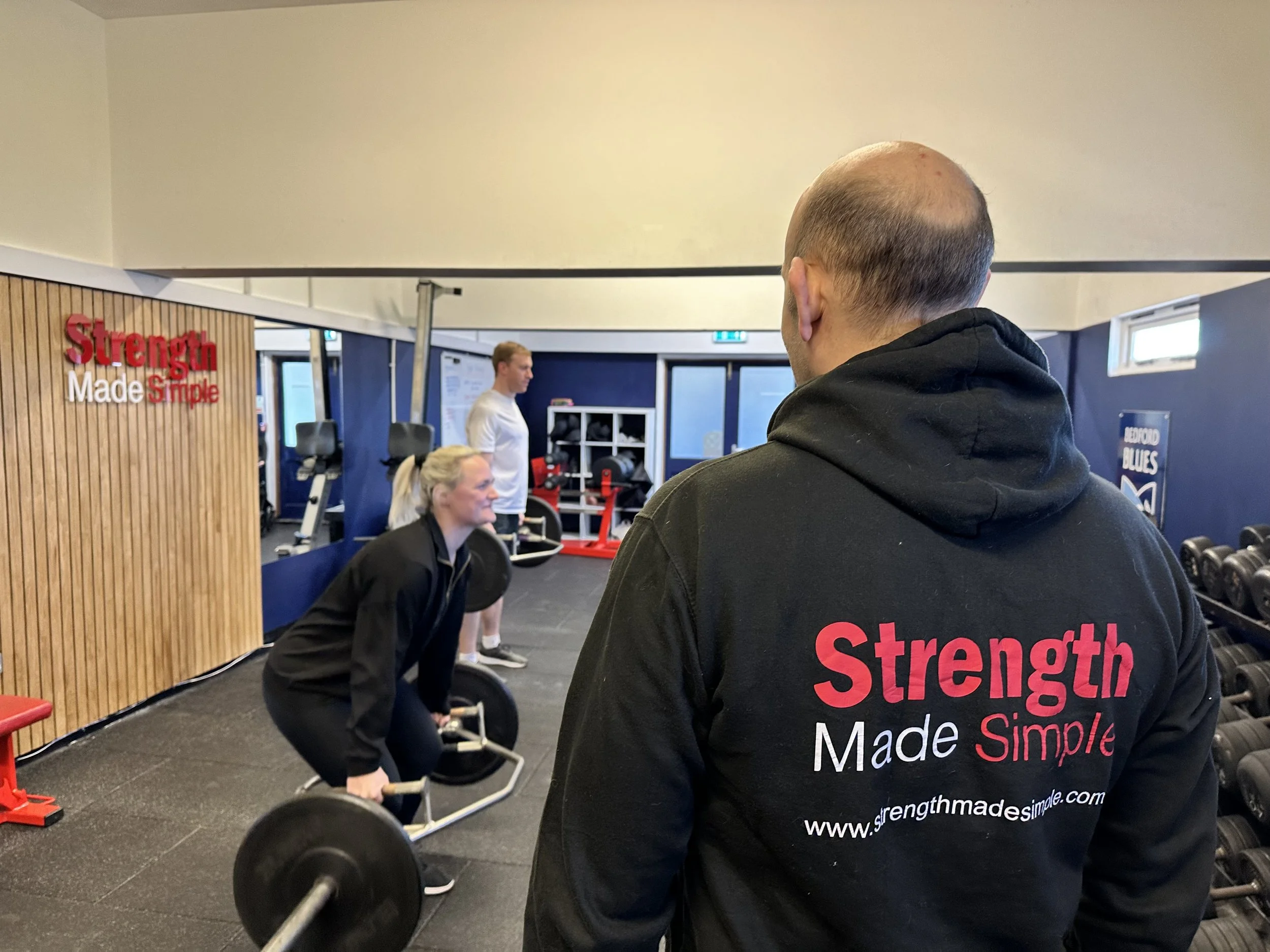
news & views - SMS blog
If you've ever joined a big commercial gym in Bedford, you'll know the drill. You sign up, get your access card, and... that's it. No plan. No support. And no one notices if you stop showing up.
At Strength Made Simple, we’re doing things differently. We’re a local strength training facility in Bedford designed to help real people feel stronger, healthier, and more confident — without the overwhelm.
We’re not just here to give you access to equipment. We’re here to coach you, support you, and keep you consistent so you get real results.
When we think about aging, most of us hope to live a long life. But what if that life isn't filled with movement, independence, or quality? That's where the difference between lifespan and healthspan comes in — and it's exactly what we focus on at Strength Made Simple.
If you’ve ever used a foam roller or massage ball to loosen up tight muscles, you’ve already practiced a form of self-myofascial release (SMR). But what exactly is SMR, and why should it be a regular part of your fitness routine?
In this article, we’ll explore what self-myofascial release is, the benefits it offers, and how to get the most out of this simple but powerful recovery technique.
As we age, maintaining physical health and performance becomes increasingly important—not only to stay active but to preserve long-term well-being and longevity. For aging athletes, the right combination of nutrition and supplementation can play a vital role in supporting muscle function, joint health, recovery, and overall vitality.
Whether you’re looking to improve your health, lose weight, build muscle, or simply stay active, understanding how much exercise you need each week is key to reaching your goals. But with so much conflicting information out there, it can be difficult to know where to start.
Embarking on a journey to improve your fitness and health is one of the most rewarding things you can do for yourself. It can bring greater energy, better sleep, improved mood, and countless other benefits. Yet, so many people find it challenging to make real, lasting changes. While there are countless reasons why people might struggle to get fitter, three common barriers stand out: lack of time, inconsistent motivation, and unrealistic goals. Let’s dive into each of these challenges and explore practical strategies to overcome them.
Did you know that sleep is as essential to your health as eating, drinking, and breathing? Yet, in our fast-paced, hustle-focused world, sleep often gets sidelined. Let’s change that! Today, we’re diving into why sleep matters, what happens when you don’t get enough, and how you can improve your sleep game for good.
If you’re looking to build muscle, knowing which exercises to focus on can make all the difference. While there are countless movements you can do in the gym, some are more effective than others for gaining strength and size. In this article, we’ll cover the best exercises for building muscle, explain why they work, and offer tips on how to incorporate them into your workout routine.
You already eat healthy foods. You know what good nutrition looks like—lean proteins, veggies, whole grains, and healthy fats. But even when you eat the right foods, it’s still possible to overeat.
Portion sizes can make or break your progress, especially if fat loss is your goal. You don’t need to cut out foods, starve yourself, or track every calorie forever. Instead, mastering portion control will help you eat enough to feel satisfied without consuming excess energy your body doesn’t need.
When we think about aging well, we often focus on staying physically strong and healthy. But just as important is taking care of our brain. Cognitive decline, memory loss, and other mental health challenges can have a significant impact on our quality of life as we grow older. Fortunately, research shows that we can take active steps to maintain and even improve brain function as we age.
When it comes to strength training, one principle stands above the rest in ensuring continuous growth and improvement—progressive overload. Whether you’re lifting weights, doing bodyweight exercises, or training for athletic performance, progressive overload is the key to unlocking long-term success and achieving your fitness goals.
When it comes to fat loss, there’s one principle that stands above the rest – the calorie deficit. It’s the foundation of every successful weight loss journey, regardless of the diet or exercise program you choose. But what exactly is a calorie deficit, and how can you achieve it in a way that promotes sustainable, long-term results? Let’s break it down.
Strength and conditioning is a critical component of athletic development, even for young athletes. When implemented correctly, it can improve performance, reduce injury risk, and build lifelong habits that contribute to overall health and fitness. For sports coaches in Bedford working with young athletes, it is essential to ensure that these practices are both safe and effective. Here are some key principles to guide you:
If you’ve been around the gym long enough, you’ve probably heard the phrase: “You can’t build strength and lose fat at the same time.” It’s one of the most common myths in fitness. But I’m here to tell you—it’s absolutely possible. I’ve seen it happen time and time again with people I train, and if you follow the right plan, you can achieve it too.
Let’s talk about stretching! Whether you’re training hard, chasing after kids, or just want to feel more comfortable in your body, improving mobility is the secret sauce to a life that feels good. The best part? It doesn’t take hours of your day—just 2 minutes a day can unlock long-term improvements. Ready to stretch your potential? Let’s dive in!
In today’s fast-paced, technology-driven world, young people are stepping away from sports earlier than ever. For many, the teenage years mark the end of regular physical activity, which can have lasting impacts on both physical and mental health. However, there’s an effective way to combat this growing issue: strength and conditioning. For young athletes in Bedford and beyond, adopting structured training can not only keep them engaged in sport but also equip them with skills for a healthier, more successful future.
When it comes to achieving fitness goals—whether it’s building muscle, losing fat, or improving overall health—consistency is king. But staying consistent can often feel like an uphill battle. This is where the principles from James Clear’s Atomic Habits come in. By leveraging his strategies, you can transform fitness and nutrition goals into achievable daily habits that stick.
When it comes to training and improving your body composition, the fitness world can feel overwhelming. Endless workout routines, new diet trends, and debates about supplements or advanced techniques often make it seem like achieving your goals requires a mountain of effort. But what if the key to success lies in doing less—and focusing on the essentials?
In the hustle and bustle of modern life, it can feel impossible to balance career ambitions, family responsibilities, and social commitments while also carving out time for your health and fitness. If you’re a busy professional in your 30s to 50s, you may find yourself asking: “How do I get the results I want without sacrificing everything else in my life?”
In the pursuit of fitness, most people envision a lean, sculpted physique as their ultimate goal. While this aspiration is valid and achievable, focusing solely on aesthetics might lead to frustration, burnout, or even injuries. Training for performance, on the other hand, shifts your mindset toward capability and function. This approach not only delivers the physical results you desire but also enhances your strength, endurance, confidence, and overall quality of life.
Strength and conditioning (S&C) is a cornerstone of athletic development, and when it comes to young athletes, working with the right coach can make all the difference. A professional young athlete S&C coach not only focuses on improving performance but also prioritizes safety, technique, and long-term development. But how do you know if your child is in the hands of a skilled coach? Here are five key signs to look out for.
You may love running, walking, cycling, or even a good yoga session to stay active. Or perhaps your main “sport” is just trying to keep up with the demands of everyday life. But there’s one type of exercise that too many people skip, and it’s costing them their performance, health, and longevity: resistance training.
Eating the right foods before and after a workout can make all the difference in your performance, recovery, and overall fitness journey. By providing your body with the fuel it needs, you’ll be able to push harder during workouts, recover faster, and reach your fitness goals more efficiently.
Bone health often goes unnoticed—until it becomes a problem. Osteoporosis and osteopenia, both characterized by a loss of bone density, affect millions of people worldwide, leading to an increased risk of fractures and a reduced quality of life. The good news? Strength training is a highly effective, science-backed approach to maintain and improve bone health, offering protection against these conditions.
Anterior Cruciate Ligament (ACL) injuries are a well-known issue in sports, particularly among female athletes. Research shows that women are two to eight times more likely than men to sustain an ACL injury. This type of injury can be season-ending and often requires lengthy recovery, making it essential for young female athletes to understand both the risks and the proactive steps they can take to reduce their chances of injury.
If you’re over 50, you might be thinking, “Why would I start exercising now? Aren’t my active days behind me?” It’s a common misconception that once you hit a certain age, exercise becomes less important. But in reality, staying active as you age is one of the most crucial things you can do to improve your quality of life, maintain your independence, and keep enjoying the activities you love.
As a parent, you naturally want the best for your child, especially if they have a passion for sports. Helping your child become the best athlete they can be isn’t just about encouraging them to score more goals or run faster; it’s about fostering their love for the game, supporting their development holistically, and guiding them through both the triumphs and setbacks they’ll encounter along the way.
Few things are as frustrating as back pain—whether it's a sudden tweak or a persistent ache that refuses to go away. If you’re an active person, back pain can feel like a major roadblock to your fitness goals, causing you to worry about missed training sessions and lost progress. But don’t despair! Back pain is common, and with the right approach, you can get back to feeling pain-free and ready to train again in no time.
When it comes to strength training, one of the most common concerns women express is the fear of getting “bulky.” This misconception has discouraged many from reaping the benefits of a regular strength-training routine.
But here’s the truth: women won’t bulk up from strength training. In fact, it’s one of the most effective ways to tone, strengthen, and transform your body for the better.
Staying hydrated is one of the most important and often overlooked aspects of maintaining overall health and wellness. While many people know they need to drink water, they may not realize just how crucial hydration is for everything from energy levels to digestion, and even brain function. Proper hydration doesn’t just come from the water you drink — it also comes from the foods you eat.






























